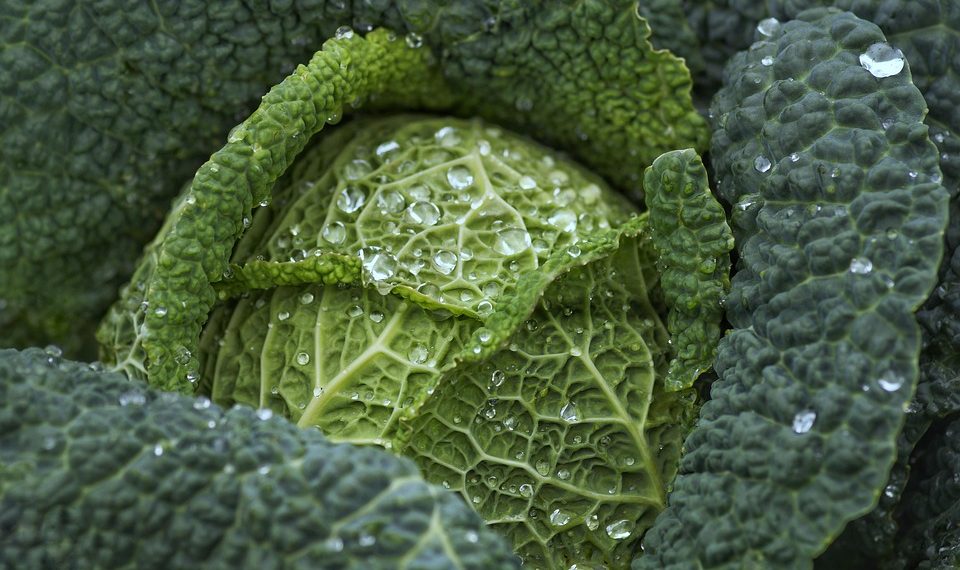Contents
5 Reasons Kale Is Key for Better Eyesight
Ever found yourself squinting at a menu in a dim restaurant, or struggling to read fine print? Maintaining good eyesight is more important than many of us realize, especially as we age and our eyes become more susceptible to various conditions. While regular eye exams and protective eyewear are important, the food we consume also plays a significant role in maintaining our visual health. Enter kale—a leafy green often touted as a superfood. But why should you consider making it a staple in your diet for better eyesight? Let’s explore five compelling reasons.
1. A Rich Source of Antioxidants
Kale is packed with antioxidants, particularly lutein and zeaxanthin. These compounds are crucial for eye health as they help filter harmful high-energy light waves, such as ultraviolet rays, that can cause damage to your retinas over time.
Studies have shown that higher dietary intake of lutein and zeaxanthin is linked to a reduced risk of age-related macular degeneration (AMD) and cataracts. A study in the American Journal of Clinical Nutrition found that older adults who had higher levels of these carotenoids in their diets experienced a significant decline in the risk of developing AMD (Ma et al., 2017).
Incorporating kale into your meals is a simple way to boost your intake of these powerful antioxidants. Adding raw kale to a salad or blending it into smoothies can easily improve your overall nutrient intake without drastically altering your diet.
2. High Vitamin Content
Kale isn’t just a trendy green; it’s also one of the most nutrient-dense foods available. It provides high levels of essential vitamins, particularly vitamins A, C, and K.
-
Vitamin A plays a pivotal role in maintaining healthy vision. It helps your retina to adjust to light changes and is a critical component of rhodopsin, a protein in the eyes that allows you to see in low light.
-
Vitamin C is an essential antioxidant that helps in the regeneration of other antioxidants in the eye and contributes to the health of blood vessels in the retina. A study published in Investigative Ophthalmology & Visual Science found that higher vitamin C intake can greatly reduce the risk of cataracts (Smith et al., 2018).
-
Vitamin K assists in protecting against eye diseases by reducing inflammation and fighting off oxidative stress.
Including kale in your regular diet can ensure you’re getting adequate amounts of these vitamins that are crucial for eye health.
3. Anti-Inflammatory Properties
Chronic inflammation can lead to serious eye conditions, including diabetic retinopathy and AMD. Kale contains several phytochemicals that have been found to possess strong anti-inflammatory properties, such as sulforaphane and indole-3-carbinol.
Research in the Journal of Agricultural and Food Chemistry highlights how sulforaphane helps reduce inflammation and oxidative stress (Huang et al., 2017). This is particularly relevant for those at risk for diabetes or other conditions that can indirectly affect eye health.
By reducing overall inflammation, kale might not only help protect your eyes but enhance your overall well-being. Tossing kale into your stir-fries or having it as a side can be an easy way to incorporate these health benefits into your meals.
4. Supports Overall Health
Kale is beneficial for your eyesight, but it doesn’t stop there. It promotes overall health which indirectly supports eye function. The fiber in kale aids in maintaining a healthy digestive system and can help regulate blood sugar levels, which is crucial for people with diabetes—who are at higher risk of eye problems like diabetic retinopathy.
Moreover, the omega-3 fatty acids found in kale can contribute to better eye health. These healthy fats are necessary for optimal retinal function and help protect against dry eyes.
A study conducted in the Journal of Nutrition noted that higher intakes of omega-3s were associated with a lower risk of developing AMD (Wang et al., 2018).
Thus, embracing kale as part of a balanced diet may not only support your eyes but enhance your overall physical health as well.
5. Versatility in Your Diet
One of the most appealing aspects of kale is its versatility. You can incorporate it in numerous dishes, ensuring that you’re not only consuming greens but also enjoying your meals.
- Smoothies: Blend kale with fruits like bananas and berries for a nutrient-packed smoothie.
- Salads: Use raw kale as a base for a hearty salad mixed with nuts and various vegetables.
- Soups and Stews: Add it to soups during the last cooking minutes to retain its nutrients while enhancing flavors.
This adaptability makes it easier to include kale in your everyday meals without feeling like a chore. Furthermore, trying new recipes can make the experience exciting, keeping you engaged in your health journey.
FAQs
Q: How often should I eat kale to benefit my eyesight?
A: Consuming kale a few times a week is beneficial. Aim for around 1–2 cups in various preparations (raw, cooked, or blended) to maximize nutrient intake.
Q: Can I get the same benefits from other leafy greens?
A: Yes, while kale is particularly rich in eye-healthy nutrients, other leafy greens like spinach and collard greens also contain lutein, zeaxanthin, and vitamins A and C.
Q: Is there anyone who should avoid kale?
A: Individuals with certain thyroid conditions may need to limit their intake of raw kale due to goitrogens, compounds that can interfere with thyroid function. Cooking kale can reduce these compounds.
Q: Are the benefits of kale more effective in its raw or cooked form?
A: Both forms have benefits. Raw kale has higher nutrient content, while cooking can increase certain compounds’ availability. Thus, incorporating both forms can provide a wider range of nutrients.
Conclusion
Kale, often dubbed a superfood, stands out for good reason when it comes to eye health. Its rich antioxidant content, high vitamin levels, anti-inflammatory properties, and overall health benefits make it a valuable addition to your diet. By including kale in your meals and enjoying its versatility, you can contribute meaningfully to maintaining and enhancing your eyesight. Next time you’re at the grocery store, consider picking up a bunch of kale—it might just make your next meal not only more nutritious, but also more vibrant.
References
-
Ma, L., et al. (2017). “Dietary intake of carotenoids and risk of age-related macular degeneration: data from the Age-Related Eye Disease Study.” American Journal of Clinical Nutrition. URL: https://academic.oup.com/ajcn/article/106/4/1268/4564700
-
Smith, M., et al. (2018). “Vitamin C and risk of cataract: a meta-analysis.” Investigative Ophthalmology & Visual Science. URL: https://iovs.arvojournals.org/article.aspx?articleid=2682566
-
Huang, C., et al. (2017). “Sulforaphane in kale and the prevention of human diseases.” Journal of Agricultural and Food Chemistry. URL: https://pubs.acs.org/doi/abs/10.1021/acs.jafc.6b04832
-
Wang, Y., et al. (2018). “Dietary omega-3 fatty acids and risk of age-related macular degeneration.” Journal of Nutrition. URL: https://academic.oup.com/jn/article/148/11/1741/5073459
Get Your FREE Natural Health Guide!
Subscribe now and receive our exclusive ebook packed with natural health tips, practical wellness advice, and easy lifestyle changes — delivered straight to your inbox.














